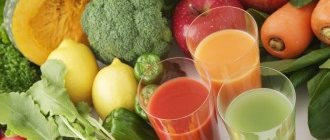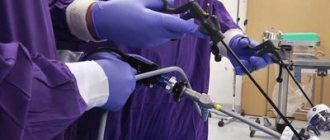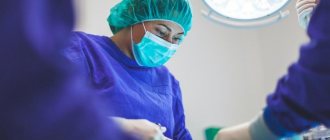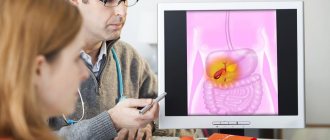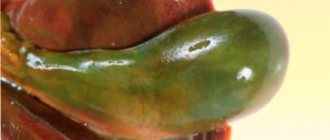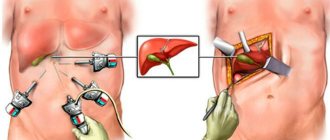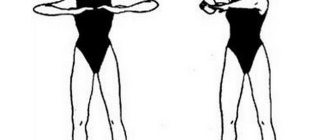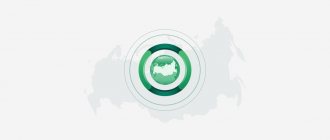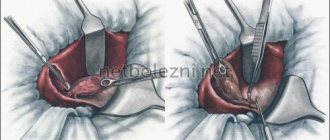Cholecystectomy is stressful. But in some cases you cannot do without surgical intervention. Such a striking example is the procedure for resection of the gallbladder. A cholecystectomy operation is performed when blockage of the bile duct by a stone has already occurred or if the likelihood of this event is very high.
In this case, the choice is small - either surgical intervention or death from rupture of the bile duct. In the past, cholecystectomy was performed using a broadband technique, but nowadays laparoscopic surgery is performed. The question arises, how to live without a gallbladder? How to eat? Let's look at recipes for dishes after gallbladder removal.
General rules
Regardless of which cholecystectomy is used - laparoscopy or traditional open cholecystectomy, diet in the postoperative period is the most important component of the treatment and recovery period, and the first days after surgery are especially important.
After the operation, it is strictly forbidden to drink any liquid for 4-6 hours. It is only allowed to wet the patient’s lips with water, and a little later (after 5-6 hours) it is allowed to rinse the mouth with herbal infusions.
After 12 hours and until the morning of the next day after surgery, you are allowed to drink still water every 10-20 minutes in small portions (1-2 sips) with a total volume of no more than 500 ml.
On the second day, low-fat kefir, unsweetened tea, and jelly are introduced into the diet (volume up to 1.5 l/day). Serving – no more than ½ glass. Frequency of administration – 1 time/3 hours.
On the third/fourth day, the patient is allowed to eat: semi-liquid mashed potatoes, pureed soups in vegetable broth, egg white omelet, grated boiled fish, fruit jelly and 1 teaspoon of low-fat sour cream. Meals up to 8 times a day, in portions of 150-200 g. From liquids, you can drink juices (apple, pumpkin) and tea with sugar.
On the fifth day, biscuits and dried wheat bread (no more than 100 g) are introduced into the diet.
On days 6–7, pureed porridge (buckwheat, oatmeal), boiled chopped fish and meat, low-fat pureed cottage cheese, vegetable puree, and fermented milk products are introduced.
On the eighth day after laparoscopy of the gallbladder, depending on the severity and prevalence of symptoms of the main, concomitant or complicating disease, Diets No. 5A , 5 , 5P (1 or 4 groups) are prescribed. As an option, Diet No. 5Sh (described in the “varieties” section).
Basic diet after gallbladder removal - Table No. 5 and its variations. In case of a pronounced inflammatory process, an anti-inflammatory option of table 5 - Diet 5B - . Its peculiarity is the limitation of the amount of food taken. The calorie content of the diet is 1600-1700 kcal (55-65 g protein, 40-50 g fat, 250 g carbohydrates).
All dishes are served exclusively pureed without broth or the addition of butter: various types of slimy cereal soups, semi-liquid pureed porridges with the inclusion of a small amount of low-fat milk, jelly, pureed compotes, vegetable juices. Next, include in the diet in small quantities carefully pureed steamed meat, boiled fish, low-fat cottage cheese, crackers or dried wheat bread.
Meals after removal of the gallbladder at least 5 times, in fractional portions, about 200 g, without salt, with plenty of liquid (about 2.5 l/day). Next, on days 8-10 the patient is prescribed Diet 5A and then Diet No. 5 .
Diet No. 5 refers to physiologically complete nutrition and is intended to normalize the process of bile secretion and reduce cholesterol in the blood. Small and frequent (5-6 times/day) meals are recommended, which promotes the outflow of bile. In order to enhance the secretion of bile, vegetables are introduced in the form of vinaigrette and salads, seasoned with unrefined vegetable oils.
Almost all easily digestible carbohydrates are sharply limited in the diet, since their intake contributes to the development of bile stagnation (sweets, jam, sugar, honey) and vegetables that contain oxalic acid and essential oils in large quantities (sorrel, spinach, citrus fruits).
In order to stimulate bile secretion, the diet includes vegetables, berries and fruits, and chicken eggs (at least one). The calorie content of the diet is 2800-3000 kcal (100 g proteins, 90 g fats, 450 g carbohydrates). Salt consumption at the level of 8-10 g, liquid - 1.5 liters.
With cholelithiasis, concomitant diseases of adjacent internal organs often occur - the duodenum, pancreas, biliary tract: duodenitis , cholangitis, pancreatitis , dyskinesia . And often against this background, after cholecystectomy, postcholecystectomy syndrome develops ( dysfunction of the sphincter of Oddi ), which is accompanied by the constant release of low-concentrated bile into the lumen of the duodenum with the further addition of pathogenic microflora and the development of inflammation of its mucosa, which leads to pain, indigestion and intestinal disorders. These consequences of bladder removal are also corrected by nutrition.
In this case, it is necessary to reduce the process of bile secretion, which is achieved by reducing the amount of fat to 60 g by completely eliminating any solid animal fats and vegetable oils from the diet. Raw fruits and vegetables, fatty meat/fish, smoked and spicy foods, onions, radishes, garlic, radishes, and strong broths based on meat/fish/mushrooms are completely excluded from the diet. The consumption of extractives, easily digestible carbohydrates, coarse fiber, table salt and liquid is also reduced to 1.5 liters per day.
For inflammation of the pancreas after cholecystomy, Table 5P . At the same time, the protein content in the diet is increased to 120 grams and fatty and carbohydrate foods are limited. The total calorie content of the diet is reduced to 2500 Kcal. Avoid hot, sweet, spicy, sour and highly fatty foods that stimulate the pancreas and foods containing a lot of fiber, purine bases and extractives.
Diet No. 5. What can you eat without fear?
Steamed dishes are recommended
Not all patients clearly understand how diet No. 5 differs from other diets. Doctors are not always able to clearly, clearly and intelligibly explain what foods are allowed and how to prepare them correctly. At the beginning of the last century, therapist Pevzner developed 15 different recommendations for the nutrition of patients depending on their diagnosis.
Diet No. 5 is intended for developing a diet for patients with pathologies of the liver, gall bladder, cirrhosis, gastritis and duodenitis. Allowed foods for diet No. 5:
- Bread - only yesterday's bread - rye, white, depending on the patient's preferences. Products made from unsweetened dough with various fillings.
- Soups without frying are best vegetarian or dairy.
- Low-fat fish and dishes made from it. Steamed, boiled or baked.
- Meat – lean poultry, pork, beef, rabbit – stewed, boiled, baked.
- Vegetable oil and butter in reasonable doses.
- Various cereal products - porridge, cereals, casseroles.
- Omelettes, but no more than 1 egg per day.
- Vegetables excluding fried ones.
- Fruits except pickled ones.
- Any drinks - juices, decoctions, jelly, tea, weak coffee.
Prohibited foods on diet No. 5:
- Fried dough - you should forget about pies and pasties.
- Rich meat and fish soups.
- Fatty meat and fish, offal.
- Cream, fatty salty cheeses.
- Some vegetables, pickled foods.
- Hot and fiery spices.
You can add dried fruits to porridges
Don't give up on delicious food! Diet No. 5 is not a death sentence. A large number of dishes have been developed that will provide healthy food and satisfy the refined tastes of any gourmet.
Varieties
After cholecystectomy, with hypermotor dyskinesia of the biliary tract or with concomitant pancreatitis , duodenitis , a gentle diet is prescribed (No. 5Sh). It is used for 14-21 days until pain and dyspeptic symptoms . Then the patient is transferred to Diet No. 5 .
General characteristics - reduced calorie content to 2000 - 2200 Kcal by limiting the consumption of fats (vegetable oil and also foods rich in cholesterol ). The consumption of easily absorbed carbohydrates is also reduced in the diet.
Products containing purines, nitrogenous extractives, and coarse fiber are completely excluded from the diet. Easily digestible proteins are not limited. The amount of salt is no more than six grams. Food is prepared by steaming or boiling.
Drinking regimen - up to 2 liters of liquid per day. Five meals a day, portions no more than 200 g with one fasting day per week. Chemical composition: 90 g proteins, 60 g fats (vegetable fats excluded), 300 g carbohydrates.
If bile stagnation occurs after laparoscopic cholecystectomy against the background of hypomotor dyskinesia, a lipotropic-fat diet ( No. 5 L/F to enhance intestinal motor function and stimulate bile secretion . The total caloric content of the diet is about 2600 kcal.
The dietary features of this diet include a high fat content (50% should be vegetable oils), a reduced content of simple carbohydrates (up to 300 g) and a slight increase in protein (up to 100 g). The diet includes lipotropic protein products (lean meat, egg whites, fish, cottage cheese), wheat bran, refined vegetable oils, and vegetables.
Butter dough, whole milk, refractory animal fats, and spices are completely excluded. The consumption of extractive substances (meat/fish broths) and foods containing cholesterol is sharply limited. Food is baked or boiled, oils are added exclusively to prepared dishes, chopping is not necessary.
Features of dietary nutrition after laparoscopy
After surgery to remove the gallbladder, the patient must follow a therapeutic diet - table No. 5 according to Pevzner. This is a special diet aimed at ensuring normal function of the liver, gastrointestinal tract and biliary tract. By adhering to the menu allowed by the diet, the patient consumes a normal amount of carbohydrates and proteins and a significantly lower percentage of lipids.
After cholecystectomy, the patient must adhere to the principles of mechanical and thermal sparing when preparing food. Products should be boiled, steamed or baked without adding fat or oil. Also, while following a diet, you must compose your diet based on the following rules:
- The amount of daily calories should be determined by a gastroenterologist or nutritionist, based on the individual health characteristics of the patient, his age and body weight.
- The amount of salt, spices and flavorings in dishes should be minimal. Do not use hot seasonings when cooking, or butter or lard for frying meat or fish.
- Meals should be fractional: you should eat at least five times a day. For lunch and afternoon snacks, it is recommended to choose light dishes rich in fiber and vitamins - fruits, vegetables, salads, etc. This diet helps regulate digestive processes and facilitates the digestion of chyme and its movement through the intestines.
- To avoid stagnation of bile, in the morning before breakfast you should drink a glass of water at room temperature.
- The most high-calorie dishes should be consumed at lunch. The calorie content of dinner should be no more than 25% of the total.
- The temperature of food when serving should be no more than 38°C. Excessively hot dishes cause an active release of bile, and too cold ones can lead to spasm of the sphincter of Oddi.
The sphincter of Oddi is a smooth, ring-shaped muscle that controls the flow of bile into the duodenum. Sphincter spasm can cause severe abdominal pain, vomiting, and impaired peristalsis.
Indications
- diet No. 5B - for severe inflammation after cholecystectomy ;
- diet No. 5A - on days 8 - 10 of treatment;
- diet No. 5 - in the recovery stage, after diet 5A ;
- diet No. 5Sh - after cholecystectomy with hypermotor dyskinesia of the biliary tract or with concomitant pancreatitis , duodenitis ;
- diet No. 5L/F - after cholecystectomy against the background of hypomotor dyskinesia to enhance intestinal motor function and stimulate bile secretion;
- diet No. 5P - after cholecystectomy for acute pancreatitis .
Berries. Allowed and prohibited
Berries are even more beneficial for patients who have undergone surgery than fruits. They can be stored frozen for a long time even without adding preservatives. Certain conditions and nuances of their use:
| Cherry | A very acidic product, therefore it can be eaten only 6-8 days after surgical treatment in the form of compote, jelly and jelly. |
| Cherries | Contains many useful microelements, including manganese, copper, zinc, which cannot be replaced by anything in the functioning of the biliary system. You can start consuming it raw 13-15 days after surgery. |
| Raspberries | Improves digestion; you can start eating in small doses 13-15 days after surgery. |
| Currant | The berry is very sour, but after 6-8 days it can be eaten in the form of compote. |
| Strawberry | Can be eaten 13-15 days after cholecystectomy, if ripe. |
| Grape | Due to bloating in the stomach after consumption, this berry should not be eaten for 2 months after surgery. |
| Watermelon and melon | Very healthy berries, recommended for consumption immediately after cholecystectomy. |
Learn about the beneficial properties of watermelon from the video:
When choosing berries, preference should be given to local ones, produced in neighboring regions - and the risk that they were treated with preservatives or exposed to chemicals is very small. The ratio of berry juice and water in the compote should be 1:3 (or the percentage of berries is less).
Authorized Products
Products and dishes allowed after surgery include: cereal/vegetable soups, day-old wheat bread, wheat bread crackers, dry biscuits, cutlets, fish, lean meat (rabbit, beef, lean young lamb), steamed, boiled chicken in pieces , fermented baked milk, kefir, low-fat whole milk, yogurt, low-fat cottage cheese and dishes based on it (lazy dumplings, casseroles), mild low-fat cheese, chicken eggs or white steamed omelet (one per day), boiled pasta and cereals (oatmeal and buckwheat ), squash caviar, vegetable salads with vegetable oil, greens, vinaigrette, low-fat ham, doctor's sausage, fruit and berry juices, dried fruits, non-acidic fruits and berries, marshmallows, marmalade, black/green tea, rosehip infusion, still mineral water.
Fats of animal and vegetable origin are added to prepared foods.
Table of permitted products
| Proteins, g | Fats, g | Carbohydrates, g | Calories, kcal | |
Vegetables and greens | ||||
| eggplant | 1,2 | 0,1 | 4,5 | 24 |
| squash caviar | 1,2 | 7,0 | 7,4 | 97 |
| cabbage | 1,8 | 0,1 | 4,7 | 27 |
| broccoli | 3,0 | 0,4 | 5,2 | 28 |
| bulb onions | 1,4 | 0,0 | 10,4 | 41 |
| carrot | 1,3 | 0,1 | 6,9 | 32 |
| cucumbers | 0,8 | 0,1 | 2,8 | 15 |
| salad pepper | 1,3 | 0,0 | 5,3 | 27 |
| parsley | 3,7 | 0,4 | 7,6 | 47 |
| radish | 1,2 | 0,1 | 3,4 | 19 |
| iceberg lettuce | 0,9 | 0,1 | 1,8 | 14 |
| tomatoes | 0,6 | 0,2 | 4,2 | 20 |
| dill | 2,5 | 0,5 | 6,3 | 38 |
Fruits | ||||
| bananas | 1,5 | 0,2 | 21,8 | 95 |
| apples | 0,4 | 0,4 | 9,8 | 47 |
Nuts and dried fruits | ||||
| nuts | 15,0 | 40,0 | 20,0 | 500 |
| raisin | 2,9 | 0,6 | 66,0 | 264 |
| dried apricots | 5,2 | 0,3 | 51,0 | 215 |
| almond | 18,6 | 57,7 | 16,2 | 645 |
| hazelnut | 16,1 | 66,9 | 9,9 | 704 |
| prunes | 2,3 | 0,7 | 57,5 | 231 |
Cereals and porridges | ||||
| buckwheat | 4,5 | 2,3 | 25,0 | 132 |
| oatmeal | 3,2 | 4,1 | 14,2 | 102 |
| rice | 6,7 | 0,7 | 78,9 | 344 |
Flour and pasta | ||||
| pasta | 10,4 | 1,1 | 69,7 | 337 |
| pancakes | 6,1 | 12,3 | 26,0 | 233 |
Bakery products | ||||
| bran bread | 7,5 | 1,3 | 45,2 | 227 |
| whole grain bread | 10,1 | 2,3 | 57,1 | 295 |
Dairy | ||||
| kefir 1.5% | 3,3 | 1,5 | 3,6 | 41 |
| Ryazhenka | 2,8 | 4,0 | 4,2 | 67 |
Cheeses and cottage cheese | ||||
| cottage cheese 1% | 16,3 | 1,0 | 1,3 | 79 |
Meat products | ||||
| beef | 18,9 | 19,4 | 0,0 | 187 |
| rabbit | 21,0 | 8,0 | 0,0 | 156 |
Sausages | ||||
| boiled diet sausage | 12,1 | 13,5 | 0,0 | 170 |
| boiled milk sausage | 11,7 | 22,8 | 0,0 | 252 |
| milk sausages | 12,3 | 25,3 | 0,0 | 277 |
Bird | ||||
| boiled chicken breast | 29,8 | 1,8 | 0,5 | 137 |
| boiled chicken drumstick | 27,0 | 5,6 | 0,0 | 158 |
| boiled turkey fillet | 25,0 | 1,0 | — | 130 |
Eggs | ||||
| hard-boiled chicken eggs | 12,9 | 11,6 | 0,8 | 160 |
Fish and seafood | ||||
| flounder | 16,5 | 1,8 | 0,0 | 83 |
| pollock | 15,9 | 0,9 | 0,0 | 72 |
| cod | 17,7 | 0,7 | — | 78 |
| hake | 16,6 | 2,2 | 0,0 | 86 |
Oils and fats | ||||
| butter | 0,5 | 82,5 | 0,8 | 748 |
| olive oil | 0,0 | 99,8 | 0,0 | 898 |
| sunflower oil | 0,0 | 99,9 | 0,0 | 899 |
Non-alcoholic drinks | ||||
| water | 0,0 | 0,0 | 0,0 | — |
| green tea | 0,0 | 0,0 | 0,0 | — |
| * data is per 100 g of product | ||||
Tropical fruits. Allowed and prohibited
Pineapple contains the enzyme bromelain, which breaks down animal protein. Even completely healthy people are advised to eat it in small quantities and with caution.
“Overseas” fruits are no less healthy than “ours”. They contain many useful elements and vitamins. But they are brought from afar and, most likely, preservatives are used for longer storage - therefore it is strictly forbidden to eat tropical fruits purchased from unverified suppliers. There are many that are not allowed to be eaten after surgery at all:
| Bananas | An incredibly healthy product, it is approved for use even with inflammation of the bile ducts, and can be eaten in any form. It may cause bloating, so you should not take more than 1 piece per day. |
| Citrus | Like any other sour product, it is prohibited for consumption in the coming months. |
| Pomegranate | Along with citrus fruits, it is included in the list of prohibited foods after surgery. |
| Persimmon | Strictly not recommended due to “viscosity”. |
| A pineapple | Despite its apparent sweetness, it contains a large amount of acid, which is unacceptable for entry into the digestive system. This fruit is also prohibited for consumption. |
Thus, it is necessary to exclude all tropical fruits from the diet, except bananas, and gradually introduce them into the diet after 3 months.
Fully or partially limited products
If the gallbladder is removed, the diet includes the exclusion from the diet of soups with meat/mushroom/fish broth, solid animal fats (lard, cooking fats), goose, duck, fatty pork, smoked meats, most sausages, fresh bread, canned food, dough (butter) , puff pastry), fried or hard-boiled chicken eggs, salted and fatty fish, fried pies, canned fish, whole milk 6% fat, cream, full-fat cottage cheese, sour cream, salted cheese, various seasonings and sauces.
Difficult-to-digest plant foods are limited: all types of legumes, radishes, mushrooms, sorrel, radishes, garlic, green onions, spinach, canned and pickled vegetables. Spicy and fatty snacks, ice cream, confectionery, chocolate, cocoa, alcohol-containing drinks, sour berries, black coffee are excluded.
Table of prohibited products
| Proteins, g | Fats, g | Carbohydrates, g | Calories, kcal | |
Vegetables and greens | ||||
| canned vegetables | 1,5 | 0,2 | 5,5 | 30 |
| peas | 6,0 | 0,0 | 9,0 | 60 |
| chickpeas | 19,0 | 6,0 | 61,0 | 364 |
| beans | 7,8 | 0,5 | 21,5 | 123 |
| spinach | 2,9 | 0,3 | 2,0 | 22 |
| sorrel | 1,5 | 0,3 | 2,9 | 19 |
Berries | ||||
| grape | 0,6 | 0,2 | 16,8 | 65 |
Mushrooms | ||||
| mushrooms | 3,5 | 2,0 | 2,5 | 30 |
Snacks | ||||
| potato chips | 5,5 | 30,0 | 53,0 | 520 |
Flour and pasta | ||||
| vareniki | 7,6 | 2,3 | 18,7 | 155 |
| dumplings | 11,9 | 12,4 | 29,0 | 275 |
Bakery products | ||||
| sliced loaf | 7,5 | 2,9 | 50,9 | 264 |
| buns | 7,9 | 9,4 | 55,5 | 339 |
Confectionery | ||||
| cookie | 7,5 | 11,8 | 74,9 | 417 |
Ice cream | ||||
| ice cream | 3,7 | 6,9 | 22,1 | 189 |
Chocolate | ||||
| chocolate | 5,4 | 35,3 | 56,5 | 544 |
Raw materials and seasonings | ||||
| mayonnaise | 2,4 | 67,0 | 3,9 | 627 |
Dairy | ||||
| milk 4.5% | 3,1 | 4,5 | 4,7 | 72 |
| cream 35% (fat) | 2,5 | 35,0 | 3,0 | 337 |
Cheeses and cottage cheese | ||||
| gouda cheese | 25,0 | 27,0 | 2,0 | 356 |
| parmesan cheese | 33,0 | 28,0 | 0,0 | 392 |
Meat products | ||||
| fatty pork | 11,4 | 49,3 | 0,0 | 489 |
| salo | 2,4 | 89,0 | 0,0 | 797 |
| bacon | 23,0 | 45,0 | 0,0 | 500 |
Sausages | ||||
| smoked sausage | 9,9 | 63,2 | 0,3 | 608 |
Bird | ||||
| duck | 16,5 | 61,2 | 0,0 | 346 |
| goose | 16,1 | 33,3 | 0,0 | 364 |
Fish and seafood | ||||
| salmon | 19,8 | 6,3 | 0,0 | 142 |
| salmon | 21,6 | 6,0 | — | 140 |
| trout | 19,2 | 2,1 | — | 97 |
Alcoholic drinks | ||||
| white dessert wine 16% | 0,5 | 0,0 | 16,0 | 153 |
| dry red wine | 0,2 | 0,0 | 0,3 | 68 |
| vodka | 0,0 | 0,0 | 0,1 | 235 |
| beer | 0,3 | 0,0 | 4,6 | 42 |
Non-alcoholic drinks | ||||
| soda water | 0,0 | 0,0 | 0,0 | — |
| cola | 0,0 | 0,0 | 10,4 | 42 |
| * data is per 100 g of product | ||||
Delicious recipes with cabbage
Cabbage is a healthy vegetable, the use of which allows you to normalize the functioning of the digestive tract, supply the body with necessary vitamins and useful elements during the period of following a gentle diet. You can cook many delicious dishes from cabbage, making your daily menu varied.
Braised cabbage
You need to take 800 g of white cabbage, 1 piece of onion and carrot, salt, 1 tbsp. L. Tomato paste, greens.
Finely chop the onion and grate the carrots. Add onion, carrots to heated vegetable oil and simmer over low heat for 10 minutes. Then you need to add the cabbage, cut into strips, and continue to simmer for another 20 minutes. Then you need to add salt, tomato paste, simmer for 5 minutes, add chopped herbs.
Buckwheat porridge with cabbage
To prepare the dish you need to take 1.5 cups of buckwheat, 500 g of white cabbage, 1 piece of onion and carrot, 1 tbsp. l. tomato paste, salt.
The onion needs to be cut into cubes. Grate the carrots on a coarse grater, cut the cabbage into strips. Onions and carrots need to be simmered in vegetable oil for 3 minutes. Then add cabbage to the prepared mass, simmer for 5 minutes, then add salt and tomato sauce. The composition must be mixed and removed from heat. Place buckwheat in a saucepan, stewed cabbage on top, add water (4-5 cm above the food), cover with a lid and place on low heat for 30 minutes.
Pie – roll with cabbage
For the dough you need to take 400 g of flour, 200 g of sour cream, 100 g of butter, 0.5 tsp each of Salt and sugar, 1 egg yolk.
For the filling you need to take 500 g of cabbage, 1 tbsp. L. Vegetable oil, 4 eggs, onions, herbs and salt to taste.
Sugar and salt are added to the flour and ground into crumbs with butter. Add sour cream, knead the pie dough and place in a cold place. Shred the cabbage and blanch in boiling water for 4 minutes. Then rinse with cold water and squeeze. Add melted butter to the cabbage and stir. Hard-boiled eggs are cut into cubes and the filling is added. The filling mixture is salted, herbs are added, and mixed.
The dough is divided into two parts. Roll out each into a thin rectangle. Place the filling on the dough, distribute it, leaving 1-2 cm of edges free and 1/4 of the dough on the short side.
Roll the dough with the filling into a roll, tucking the edges, brush the top with yolk and place in the oven (190 degrees) for 50 minutes.
Cabbage is a healthy and tasty vegetable, the use of which after undergoing surgery to remove the gallbladder allows you to replenish the body with useful substances and normalize the functioning of the gastrointestinal tract without harm to the liver.
Diet menu after gallbladder removal (Diet)
Below are several menu options for Table No. 5 . It can be modified by observing food processing methods and food preparation technology within the list of products allowed for consumption. Meals are 6 times a day, the diet should alternate between protein dishes (beef, turkey, chicken, fish, cottage cheese) and carbohydrate dishes prepared on the basis of various cereals.
Option 1
| Breakfast |
|
| Lunch |
|
| Dinner |
|
| Afternoon snack |
|
| Dinner |
|
| For the night |
|
Option 2
| Breakfast |
|
| Lunch |
|
| Dinner |
|
| Afternoon snack |
|
| Dinner |
|
| For the night |
|
Option 3
| Breakfast |
|
| Lunch |
|
| Dinner |
|
| Afternoon snack |
|
| Dinner |
|
| For the night |
|
Diet from days three to seven
The first days after organ removal, the patient is under the supervision of the attending physician. The doctor monitors diet compliance. However, after discharge from the hospital, the patient may face a number of difficulties. The support of your family will help you overcome them. If they join a therapeutic diet, it is easier for the operated person to come to terms with the restrictions.
An important task after discharge is the prevention of bile stagnation. Food must be chewed well. It is equally important to drink from 1.5 to 2 liters of pure still water per day. The menu for the week after removal of the gallbladder in the first month is based on some rules:
- Starting from day 3, it is allowed to drink freshly squeezed juices from beets and apples. You can have potato or other vegetable puree, fruit jelly, steam omelet, weak tea.
- On the 5th day, eat some white, dried bread.
- On days 6-7 after removal of the gallbladder, the diet expands to include liquid cereal porridges (buckwheat, millet or oatmeal), low-fat cottage cheese, boiled ground lean meat, and fish.
You need to drink still water, homemade fruit and vegetable juices, jelly, a decoction of dried fruits or rose hips, and lightly sweetened tea. The total volume of liquid consumed should reach 2 liters.
Dish recipes
Dietary food should be as varied and tasty as possible and include all permitted foods. Recipes for a removed gallbladder can be changed according to your tastes and preferences. The main thing is to follow the cooking technology and use only approved products. Below are some healthy recipes.
First meal
Vegetarian oatmeal soup with vegetables
Potatoes, carrots, zucchini, oatmeal or instant cereal, butter/vegetable oil, sea salt.
Prepare broth from finely chopped vegetables. Add oatmeal and cook for another 5-10 minutes. Salt, add herbs and butter.
Chicken puree soup with vegetables
Any seasonal vegetables (broccoli, carrots, potatoes, eggplants), chicken fillet, herbs, salt, sour cream 10%.
Puree soup with vegetables
Boil chicken with vegetables. Grind the meat. Add sour cream to the resulting broth, beat with a blender until pureed, add salt, add herbs and pieces of meat. Serve with toasted bread and finely grated cheese.
Second courses
Fish cutlets
White fish fillet, whole milk or cream, bread, egg, salt.
Soak bread in milk. Grind the fish until minced, add squeezed bread, egg white and salt. Mix the minced meat well. Form cutlets and bake in the oven or boil in a steam bath. You can use mashed potatoes or stewed vegetables as a side dish.
Steam omelette with meat
Eggs, beef (chicken), milk, butter, salt.
Steamed meat omelet
Boil the meat until tender, pass through a meat grinder. Beat the eggs, pour in the milk and mix thoroughly, add salt. Mix the ground meat into the whipped mixture. Pre-grease the mold with butter and pour the egg-meat mixture into it. Steam.
Dessert
Casserole (cottage cheese with berry sauce)
Cottage cheese, eggs, sugar, semolina, butter.
Beat cottage cheese in a blender, add semolina, sugar, eggs, dried fruits. Mix everything. Pre-grease the mold with butter, lay out the prepared mass and bake in the oven for 30-40 minutes. For the sauce, beat any berries in a blender, add sugar. Serve with sauce or jam.
Apples baked with dried fruits
Sour apples, dried fruits, honey, butter.
Apples baked with dried fruits
Wash the apples and remove the core of the apple. Fill the cavity with chopped dried fruits, sprinkle with cinnamon, add a little butter and honey. Bake in the oven until done.
The benefits of greenery
The most important beneficial properties of parsley: prevent cancer, reduce blood sugar and cholesterol, protect the lungs and heart.
Any herb or greens can and should be taken into food by the patient in any quantity. According to folk medicine, they help cleanse the body and, in particular, the liver of toxins. It is recommended to consume parsley and dill, because this is a measure to prevent the formation of new stones in the bile ducts. In addition, greens improve digestion.
Parsley is especially useful - it contains many micro- and macroelements, beta-carotene and a large number of vitamins, which improves immunity and reduces the risk of malignant tumors, so those who have undergone an operation such as cholecystectomy should add more of this greenery to their diet.
Advantages and disadvantages
| pros | Minuses |
|
|
Adviсe
After removal of the gallbladder, you need to practice reasonable physical activity: morning exercises, walking. In the first six months, intense loads on the abdominal muscles are not allowed. In the first month after laparoscopic cholecystectomy , you are allowed to lift no more than two kilograms. After 6 months there are no special restrictions for natural physical activity.
Sanatorium-resort treatment is recommended no earlier than three months after cholecystectomy.
Many people complain of frequent constipation after surgery. If constipation occurs, we recommend including 6-8 prunes in your daily diet, which should be soaked in a glass of warm water and left overnight at room temperature, covered with a saucer. In the morning, drink all the water and eat prunes (you can do it in two doses).
The importance of diet
If you have any doubts regarding the consumption of a certain product while on a diet, you should consult your doctor. In addition to organizing a regular diet, great importance should be given to regular physical activity, but it is advisable to replace strength training with walks in the open air. With the condition of abstaining from food excesses and maintaining proper nutrition during large ceremonial feasts, you can maintain working capacity for many years, and also prevent the occurrence of serious complications after surgery, for example, the appearance of stones in the bile ducts or pancreatitis.
Comments from nutritionists
After the first month, as a rule, the patient’s diet expands, and many patients begin to break the diet, which causes them to make a serious mistake. A diet after cholecystectomy in the first three months is mandatory, since during this period the functional activity of the digestive organs changes.
After cholecystectomy, during the absence of food in the small intestine, the possibility of bile deposition disappears. At the same time, due to the lack of opportunity for its concentration, the properties of bile change, which affects the function of the gastrointestinal tract. It is these features that are taken into account in the dietary program. Therefore, the question of how long to follow this therapeutic diet can be answered: the minimum period is three months.
The consequences of not following a diet after cholecystectomy can be very serious. Most often, the patient develops postcholecystectomy syndrome with all the ensuing consequences.
Generally speaking, after removal of the gallbladder, you cannot neglect your diet. The diet and diet must be changed forever. Of course, over time, many requirements are simplified, but the basic principles must be respected. This will allow you to optimally maintain liver function and bile secretion, normalize the functioning of the entire gastrointestinal tract and prevent constipation , bloating , and bitterness in the mouth, which are often found after cholecystectomy.
Many women trying to lose weight are interested in the question of whether it is possible to fast if the gallbladder has been removed. No, therapeutic fasting is strictly contraindicated for persons after cholecystectomy. They desperately need fractional meals. In the absence of a gallbladder, there is no natural accumulation of bile - it constantly enters the intestinal lumen, and during fasting and the absence of a food substrate in the intestine, bile will damage the intestinal mucosa. Fasting is for healthy people.
The essence of the operation and the problems encountered
The gallbladder, as an anatomical formation, acts as a reservoir and storage of bile produced by the liver. At the right moment, it releases a portion of bile acids through the bile duct into the duodenum, where they are included in the digestion process.
The formation of calculi (salts, stones) is facilitated by stagnation and disturbances in the composition of bile. And this, in turn, is caused by inflammatory diseases of the bladder, liver (biliary hepatitis and cirrhosis), ducts, and poor nutrition.
The most common eating disorders:
- the predominance of fatty foods high in cholesterol;
- non-compliance with diet (long breaks, overeating);
- passion for fashionable dietary recommendations for weight loss and cleansing.
The stages of the operation in the classical method of cholecystectomy involve opening the abdominal cavity with an incision
Cholecystectomy consists of carefully isolating the gallbladder, ligating the cystic artery in the area of the vesicohepatic ligament, applying a clamp to the neck of the formation, followed by intersection at a distance of 1.5–2 cm from the common bile duct. If there is purulent effusion, drainage is left for several days before suturing the wound.
..
Finally, the gallbladder has been removed, there are no attacks of pain, the postoperative wound is gradually covered with scar. But have the biochemical processes in the body changed? Can the patient be sure that the disease will not recur?
Liver cells continue to produce bile. Now there is nowhere to accumulate, so it constantly flows slowly through the bile ducts into the intestines. Nutrition for a person without a gallbladder should stop the increase in bile secretion, its stagnation, and eliminate bad habits and metabolic disorders. Otherwise, the stones form again, but in the hepatic ducts.
Reviews and results
Reviews from the overwhelming number of patients after cholecystectomy confirm the need and beneficial effect of therapeutic nutrition on the state of the gastrointestinal tract. A therapeutic diet allows the patient to recover faster and normalize their lifestyle:
- “...I was tormented by cholelithiasis for a long period. During an exacerbation, I went to the hospital, but then the stones increased in size and the colic became unbearable. They performed an operation and removed the bladder with stones. They said that diet when removing the gallbladder by laparoscopy is the most important thing in treatment. And now almost 3 months have passed. Everything has more or less returned to normal, however, if there is a sudden violation of the diet (overeating, eating fatty foods, drinking a little), various complications begin. Although I understand that nutrition in the absence of a gallbladder needs to be constantly monitored”;
- “... After the removal of the gallbladder, my diet was very strict. A month later I tried to more or less expand it, but I felt bad. The doctor said that it was too early to switch to a common table. And only a year later I was able to start eating normally”;
- “... For more than a year I followed the diet required after surgery - I did not eat lard, salads with green peas, tomatoes, any dishes with tomato juice, borscht, radishes. It’s been 3 years since the surgery, I eat almost everything. There is no discomfort or pain - life without a gallbladder is quite normal”;
- “... In the hospital, this diet was prescribed. For people with excised gallbladder, this is the solution. So I’ve been sticking to it for the second month now. I think I’ll gradually expand it later”;
- “... The food is healthy and wholesome, it’s not difficult to sit on it, you can endure it, the main thing for me is that there is no pain”;
- “... I cook everything for my husband in a double boiler, I visited the forum, and found a lot of useful recipes and tips. Now the food has become varied, and I have taught my children to eat this way too. This is cool";
- “... The doctor warned that therapeutic nutrition after cholecystectomy should last 5-6 months, and then you can slightly expand your diet. But I couldn’t stand it for six months and after 4 months I switched to a regular diet, but without fried foods.”
Features of the operation
This procedure is highly effective and at the same time low traumatic to the tissues of the pelvis and peritoneum. In recent years, this type of surgical intervention in the peritoneal cavity has become the most popular and frequently used, and the price has become more affordable. The procedure is indicated for gallstone disease, as it has a minimum of complications and allows recovery in a short time.
The surgical operation is carried out using special equipment (laparoscope) and instruments (trocars). A laparoscope is a tube with a camera at the end and equipped with a small flashlight. The equipment is inserted into the abdominal cavity through a small hole on the anterior wall of the peritoneum. The camera transmits the image to the monitor for the doctor performing the manipulation. Thanks to microscopic equipment, a specialist sees what is happening inside the human body without making a large abdominal incision with a scalpel.
